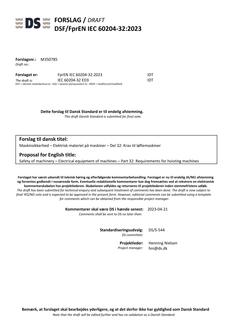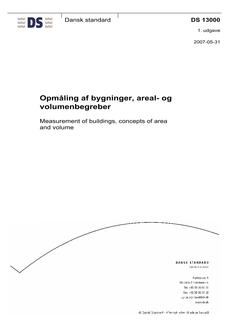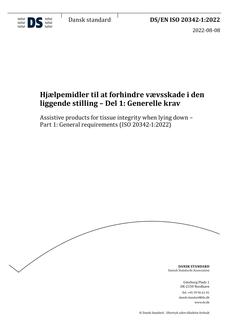-
-
Available Formats
- Availability
- Priced From ( in USD )
-
Available Formats
-
- Immediate download
- $78.00
- Add to Cart
-
- Printed Edition
- Ships in 1-2 business days
- $78.00
- Add to Cart
Customers Who Bought This Also Bought
-

DANSK DSF/FPREN IEC 60204-32
Priced From $85.00 -

DANSK DS 13000
Priced From $64.00 -

DANSK DS/EN ISO 1133-1
Priced From $78.00 -

DANSK DS/EN ISO 20342-1
Priced From $90.00
About This Item
Full Description
This part of ISO 10846 explains the principles underlying ISO 10846-2, ISO 10846-3, ISO 10846-4 and ISO 10846-5 for determining the transfer properties of resilient elements from laboratory measurements, and provides assistance in the selection of the appropriate part of this series. It is applicable to resilient elements that are used to reduce a) the transmission of audiofrequency vibrations (structure-borne sound, 20 Hz to 20 kHz) to a structure which may, for example, radiate fluid-borne sound (airborne, waterborne, or other), and b) the transmission of low-frequency vibrations (typically 1 Hz to 80 Hz), which may, for example, act upon human subjects or cause damage to structures of any size when the vibration is too severe. The data obtained with the measurement methods, which are outlined in this part of ISO 10846 and further detailed in ISO 10846-2, ISO 10846-3, ISO 10846-4 and ISO 10846-5, can be used for . product information provided by manufacturers and suppliers, . information during product development, . quality control, and . calculation of the transfer of vibrations through resilient elements. The conditions for the validity of the measurement methods are a) linearity of the vibrational behaviour of the resilient elements (this includes elastic elements with non-linear static load-deflection characteristics, as long as the elements show approximate linearity for vibrational behaviour for a given static preload), and b) the contact interfaces of the vibration isolator with the adjacent source and receiver structures can be considered as point contacts.





